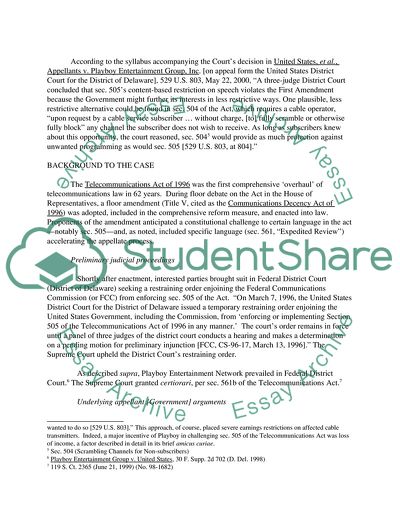Cite this document
(US Supreme Court Case: U.S. vs. Playboy Entertainment Group Case Study Example | Topics and Well Written Essays - 1500 words, n.d.)
US Supreme Court Case: U.S. vs. Playboy Entertainment Group Case Study Example | Topics and Well Written Essays - 1500 words. https://studentshare.org/law/1706183-us-supreme-court-cases-us-vs-playboy-entertainment
US Supreme Court Case: U.S. vs. Playboy Entertainment Group Case Study Example | Topics and Well Written Essays - 1500 words. https://studentshare.org/law/1706183-us-supreme-court-cases-us-vs-playboy-entertainment
(US Supreme Court Case: U.S. Vs. Playboy Entertainment Group Case Study Example | Topics and Well Written Essays - 1500 Words)
US Supreme Court Case: U.S. Vs. Playboy Entertainment Group Case Study Example | Topics and Well Written Essays - 1500 Words. https://studentshare.org/law/1706183-us-supreme-court-cases-us-vs-playboy-entertainment.
US Supreme Court Case: U.S. Vs. Playboy Entertainment Group Case Study Example | Topics and Well Written Essays - 1500 Words. https://studentshare.org/law/1706183-us-supreme-court-cases-us-vs-playboy-entertainment.
“US Supreme Court Case: U.S. Vs. Playboy Entertainment Group Case Study Example | Topics and Well Written Essays - 1500 Words”. https://studentshare.org/law/1706183-us-supreme-court-cases-us-vs-playboy-entertainment.


